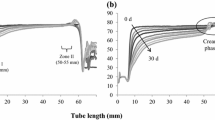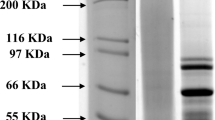Abstract
Lecithins are frequently applied in the food industry as emulsifiers, viscosity regulators, and dispersing agents. The main aim of the present work was to study the emulsifying capability of diverse sunflower lecithins so as to evaluate the functionality of these by-products, which are not extensively used at present. The experimental results obtained for water-in-oil (W/O) emulsions showe that dispersions containing levels of 0.1% lecithins were more stable against coalescence than a control system, whereas those with 1% emulsifying agent exhibited the opposite behavior. On the other hand, faster sedimentation kinetics were observed at a concentration of 0.1% than at 1%. Lecithins with high phospholipid content, especially phosphatidylethanolamine and phosphatidylinositol, were found to be the best emulsifying agents for W/O dispersions. In the case of oil-in-water emulsions, it was possible to observe two processes: creaming of emulsions with the addition of 1% of lecithins, and instant creaming followed by coalescence of the cream phase in those cases corresponding to 0.1% added lecithin.
Similar content being viewed by others
References
Krawczyk, T., Lecithin: Consider the Possibilities, inform 7:1158 (1996).
Parnham, M., The Importance of Phospholipid Terminology, inform 7:1168 (1996).
Armin, W., Lecithin: The First 150 Years. Part I: From Discovery to Early Commercialization, Inform 11:885 (2000).
Armin, W., Lecithin: The First 150 Years. Part II: Evolution to a Global Pharmaceutical Industry, inform 11:992 (2000).
van Nieuwenhuyzen, W., The Industrial Uses of Special Lecithins, J. Am. Oil Chem. Soc. 58:886 (1981).
van Nieuwenhuyzen, W., Fractionation of Lecithins, Eur. Food Drink Rev.: Process Technol.: 27: (1999).
van Nieuwenhuyzen, W., and B. Szuhaj, Effect of Lecithins and Proteins on the Stability of Emulsions, Fett/Lipid 100:282 (1998).
Rydhag, L., and I. Wilton, The Function of Phospholipids of Soybean Lecithin in Emulsion, J. Am. Oil. Chem. Soc. 58:830 (1981)
Morrison III, W.H., Sunflower Lecithin. J. Am. Oil. Chem. Soc. 58:902 (1981).
Morrison III, W.H., Sunflower Lecithin, in Lecithins, edited by B.F. Szuhaj and G. List, American Oil Chemists' Society, Champaign, 1985, p. 97.
Holló, J., J. Perédi, A. Ruzics, M. Jeránek, and A. Erdélyi, Sunflower Lecithin and Possibilities for Utilization. J. Am. Oil Chem. Soc. 70:997 (1993).
Pan, L.G., A. Campana, M.C. Tomás, and M.C. Añón, A Kinetic Study of Phospholipid Extraction by Degumming Process in Sunflower Seed Oil, J. Am. Oil Chem. Soc. 77:1273 (2000).
Author information
Authors and Affiliations
Corresponding author
About this article
Cite this article
Pan, L.G., Tomás, M.C. & Añón, M.C. Effect of sunflower lecithins on the stability of water-in-oil and oil-in-water emulsions. J Surfact Deterg 5, 135–143 (2002). https://doi.org/10.1007/s11743-002-0213-1
Received:
Accepted:
Issue Date:
DOI: https://doi.org/10.1007/s11743-002-0213-1




